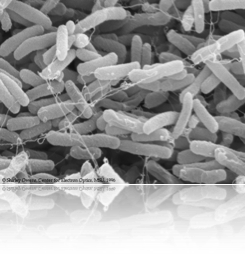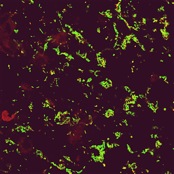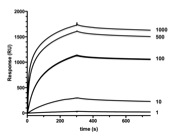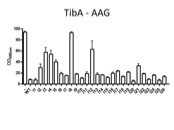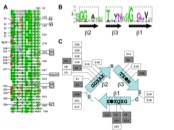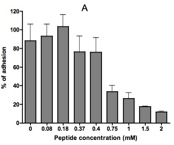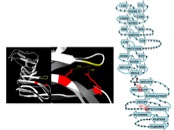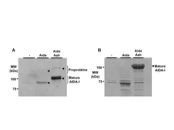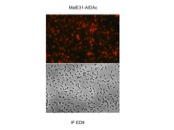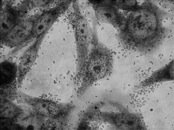Structure and Mechanism of Aah glycosyltransferase
mardi 30 juin 2009
We are purifying the protein-specific glycosyltransferase Aah and studying its structure and mechanism of action.

Mechanism of cell adhesion mediated by AIDA-I
mardi 30 juin 2009
AIDA-I and TibA mediate, like other SAATs, mediate adhesion to host epithelial cells when they are glycosylated. We are studying this mechanism by identifying cellular receptors for these adhesins

Auto-aggregation mechanism
mardi 30 juin 2009
Auto-aggregation is the clumping of bacterial cells in solution. AIDA-I and TibA, like all SAATs, mediate this phenotype. The hypothesis is that SAATs are capable of self-interaction. We are testing

Structure-Function relationships: TibA
mardi 30 juin 2009
TibA, like AIDA-I, mediates adhesion to epithelial cells, invasion of these cells, as well as auto-aggregation and formation of biofilms. We are mutagenizing the protein in order to locate which

Structure-Function relationships: AIDA-I
mardi 30 juin 2009
AIDA-I mediates adhesion to epithelial cells, invasion of these cells, as well as auto-aggregation and formation of biofilms. We are mutagenizing the protein in order to locate which domains are

Inhibiting adhesion
mardi 30 juin 2009
We are designing small-molecule inhibitors of adhesion mediated by SAATs, in order to prove the concept that inhibiting the specific adhesion of pathogens can be a valuable addition to current

Biogenesis: Cleavage
mardi 30 juin 2009
AIDA-I is cleaved once it is in the outer membrane. We are studying this mechanism and its role in the biogenesis and function of the protein.

Biogenesis: Glycosylation
mardi 30 juin 2009
TibA and AIDA-I are SAATs that can be modified by interchangeable but specific glycosyltransferases: TibC and Aah, respectively, which add heptose molecules to the proteins. We are studying these

Biogenesis: Secretion
mardi 30 juin 2009
SAATs belong to the family of autotransporters, secreted by a Type 5 secretion mechanism. Details of this secretion mechanism are still unclear and we are studying the crossing of the inner membrane

Identification and sequencing of aida alleles
mardi 30 juin 2009
Through a collaboration with Dr John Fairbrother (UdeM), we have access to a vast collection of clinical isolates bearing the aida gene. We are sequencing these alleles in order to understand the

Studying aah-aida regulation
mardi 30 juin 2009
The AIDA-I and TibA SAATs are each found in an operon with a gene coding for a glycosyltransferase located immediately upstream: Aah and TibC, respectively. We are mapping the promoter of this

Background: SAAT
mardi 30 juin 2009
AIDA-I belongs to a family of autotransporters that have a specific imperfectly repeated sequence of 19 amino acids in their N terminus. The consensus of these repeats is:
-GG-A--T-(

Background: AIDA-I
mardi 30 juin 2009
The Adhesin Involved in Diffuse Adherence (AIDA-I) is an afimbrial adhesin that was first identified in 1989 by the laboratory of Dr Michael Schmidt (Univ. of Muenster), from a case of infantile





